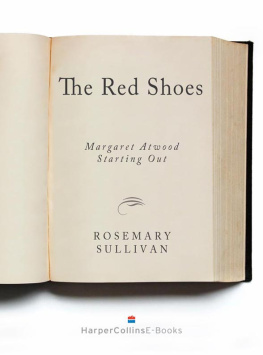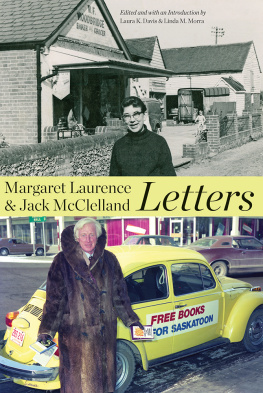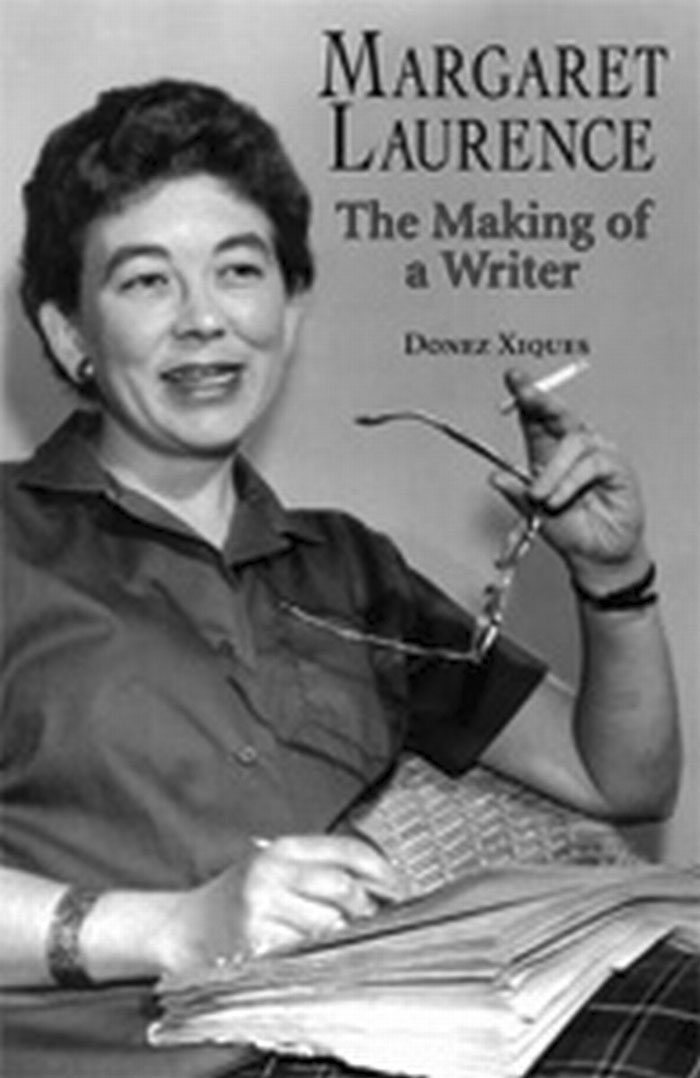M ARGARET L AURENCE
For Judith
M ARGARET L AURENCE
The Making of a Writer
Donez Xiques

Copyright Donez Xiques, 2005
All rights reserved. No part of this publication may be reproduced, stored in a retrieval system, or transmitted in any form or by any means, electronic, mechanical, photocopying, recording, or otherwise (except for brief passages for purposes of review) without the prior permission of Dundurn Press. Permission to photocopy should be requested from Access Copyright.
Copy-editor: Patricia Kennedy
Designer: Jennifer Scott
Printer: University of Toronto Press
Library and Archives Canada Cataloguing in Publication
Xiques, Donez
Margaret Laurence : the making of a writer / Donez Xiques.
Includes bibliographical references and index.
ISBN 1-55002-579-1
1. Laurence, Margaret, 1926-1987. 2. Novelists, Canadian
(English)--20th century--Biography. I. Title.
PS8523.A86Z994 2005 C813.54 C2005-904877-8
1 2 3 4 5 09 08 07 06 05

We acknowledge the support of the Canada Council for the Arts and the Ontario Arts Council for our publishing program. We also acknowledge the financial support of the Government of Canada through the Book Publishing Industry Development Program and The Association for the Export of Canadian Books, and the Government of Ontario through the Ontario Book Publishers Tax Credit program, and the Ontario Media Development Corporation.
Care has been taken to trace the ownership of copyright material used in this book. The author and the publisher welcome any information enabling them to rectify any references or credit in subsequent editions.
J. Kirk Howard, President
Printed and bound in Canada.
Printed on recycled paper.
www.dundurn.com
Dundurn Press
3 Church Street, Suite 500
Toronto, Ontario, Canada
M5E 1M2
Gazelle Book Services Limited
White Cross Mills
Hightown, Lancaster, England
LA1 4X5
Dundurn Press
2250 Military Road
Tonawanda NY
U.S.A. 14150
BOOKS BY
MARGARET LAURENCE
FICTION
This Side Jordan (1960)
The Tomorrow-Tamer (1963)
The Stone Angel (1964)
A Jest of God (1966)
The Fire-Dwellers (1969)
A Bird in the House (1970)
The Diviners (1974)
NON-FICTION
The Prophets Camel Bell (1963)
Long Drums and Cannons: Nigerian Dramatists and Novelists (1968)
Heart of a Stranger (1976)
Dance on the Earth (1989)
FICTION FOR YOUNG ADULTS
Jasons Quest (1970)
Six Darn Cows (1979)
The Olden Days Coat (1979)
The Christmas Birthday Story (1980)
TRANSLATIONS
A Tree for Poverty: Somali Poetry and Prose (1954)
TABLE OF CONTENTS
PREFACE
Margaret Laurence in Africa. The phrase is unfamiliar; yet it was The Prophets Camel Bell, a remarkable travel memoir recounting a two-year residence in East Africa, that first brought Laurences writing to my attention the year after her death at the age of sixty. I was spending the summer of 1988 in Canada, but I had never met Laurence and was then unaware of her passing and of her enormous impact on Canadian letters during the mid-twentieth century.
I found the narrative voice in The Prophets Camel Bell remarkable, and then began researching her subsequent five-year sojourn in the Gold Coast (Ghana). Eager for more of her writing, I read The Tomorrow-Tamer and Other Stories, a collection of ten stories with West African settings and characters. It was only after these African works that I read her Manawaka fiction books with Canadian characters and settings.
Over time my engagement with Margaret Laurences books led me to ask: how did this woman, born Peggy Wemyss in the Canadian prairies in 1926 and raised there during the years of the Great Depression, become such an accomplished professional writer? It was the trajectory of Margaret Laurences apprenticeship that I wanted to discover, for it was her writing that drew me, and for which she will be remembered.
In search of clues about the period of her apprenticeship, I embarked on my research. At that time other scholars had published analyses of her major fiction, but little attention had been paid to her beginnings. I was fortunate in my quest, because I was able to locate and interview more than one hundred people who had known her (former teachers, classmates, neighbours, and professional associates), and who were scattered across Canada from Vancouver to Winnipeg, Toronto, Montreal, and Nova Scotia, as well as those living in England and Scotland. These interviews, augmented by extensive archival research in North America and England, form the background of this study and made it possible to chart the course of Margaret Laurences development as a writer, one of the most important of her generation. I wanted as much as possible to narrate the story of that development from her perspective and from a time when she had no idea what the future might hold or what results her efforts to become a writer might yield.
The notion of following Margaret Laurence at the peak of her career was less interesting to me than tracing the path of her literary growth. She was an ambitious young woman, who, after graduating from college, worked as a journalist, married, and then set out to accompany her husband during his quest for challenging engineering work in remote areas. While doing so, she found her literary voice in the high desert plateau of the British Somaliland Protectorate and in the semi-tropical regions of the African Gold Coast. This young woman, who lived abroad as Peggy Laurence, returned to Canada, where she became, as Margaret Laurence, one of the most respected and beloved writers of her day.
In tracing her experiences as a young writer during the months following her graduation from college, I read more than a hundred columns that carried her byline in two Winnipeg newspapers. Although material exists from that period and from her school years, as it sometimes does for other writers, we might not have known much about the many years of her slow apprenticeship prior to her literary successes had it not been for her voluminous correspondence while abroad. Hundreds of letters provide information about this period and supplement the information in her memoirs, Dance on the Earth. There are letters to her literary agent, and to editors at three major publishing houses: McClelland & Stewart, Canada; Macmillan, London; and Alfred A. Knopf, New York. In addition, there is an extensive and unique body of correspondence with another Manitoban, Adele Wiseman, who became a lifelong friend and a significant author in her own right.
These letters make clear that Margaret Laurences efforts to develop her talent as a writer extended over a long period, even though interviews much later in her life tend to convey the impression that her writing was inspired, a concept that she seemed to endorse.
The Margaret Laurence who emerged from my research is not the middle-aged woman who is shown casually walking to the post office in the National Film Boards presentation First Lady of Manawaka, nor is she the woman, whom some people recall, anxiously arriving hours ahead of time for appointments and cautiously waiting for a light to change before crossing a street. I discovered rather the younger writer who slept in the back of a Land Rover in the desert plateau of Somalia while accompanying her husband as he directed a project to make water available to the semi-nomadic herdsmen and their camels. Margaret Laurence in her twenties was intrepid and eager for adventure. She endured sandstorms, sudden








